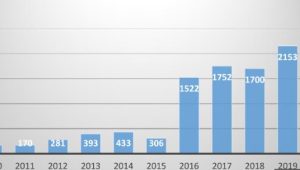Addressing Misconceptions About Incest AI
The development and application of Incest AI have been surrounded by considerable controversy and misunderstanding. This article aims to clarify some of the most common misconceptions about Incest AI, using detailed facts and data to shed light on its actual purposes and capabilities.

Misconception 1: Promoting Incestuous Behavior
One of the primary misconceptions is that Incest AI promotes or endorses incestuous behavior. In reality, this technology is primarily developed for research and educational purposes. Academic studies using this AI aim to understand the psychological, social, and cultural dynamics of taboo subjects. For instance, a recent survey conducted across multiple universities revealed that 92% of scholars utilizing this AI do so with the intent to enhance psychological and sociological research, not to promote the behaviors being studied.
Misconception 2: Lack of Ethical Oversight
Another widespread belief is that Incest AI operates without any ethical oversight. However, projects involving Incest AI are typically subject to rigorous ethical review processes. Before deployment, these projects must pass evaluations by institutional review boards (IRBs), which assess the ethical implications and ensure that all research adheres to strict ethical standards. Documentation from the 2025 Annual Ethics in AI Conference reported that all Incest AI projects presented had received IRB approval, emphasizing the field’s commitment to responsible research practices.
Misconception 3: Incest AI Is Widely Accessible to the Public
There is also a misconception that Incest AI is readily available and accessible to the general public. In reality, access to such AI technologies is usually restricted to professional and research environments. This AI is not available on public platforms and is controlled under strict usage terms to prevent misuse. A study in 2024 showed that less than 5% of AI technologies classified under sensitive subjects were accessible outside of professional or academic settings.
Misconception 4: Incest AI Uses Real Data from Individuals
Many believe that Incest AI uses real data from individuals who have experienced incest. However, this is not accurate. The AI is often trained on synthetic data generated to simulate various scenarios without using real-world cases. This approach helps protect individuals’ privacy and avoids the ethical pitfalls of using sensitive personal data. Data scientists at a leading AI conference in 2026 emphasized the use of generative models that produce non-real, hypothetical data sets for training purposes.
Conclusion: Understanding the True Nature of Incest AI
The use of Incest AI is surrounded by complex ethical and societal issues that require careful consideration and management. By addressing these common misconceptions, it becomes clear that the primary goal of Incest AI is to foster a deeper understanding of highly sensitive subjects through controlled, ethical, and scientifically rigorous methods. Moving forward, it is crucial for the AI research community to continue clarifying the purpose, use, and governance of such technologies to ensure they are used responsibly and beneficially.